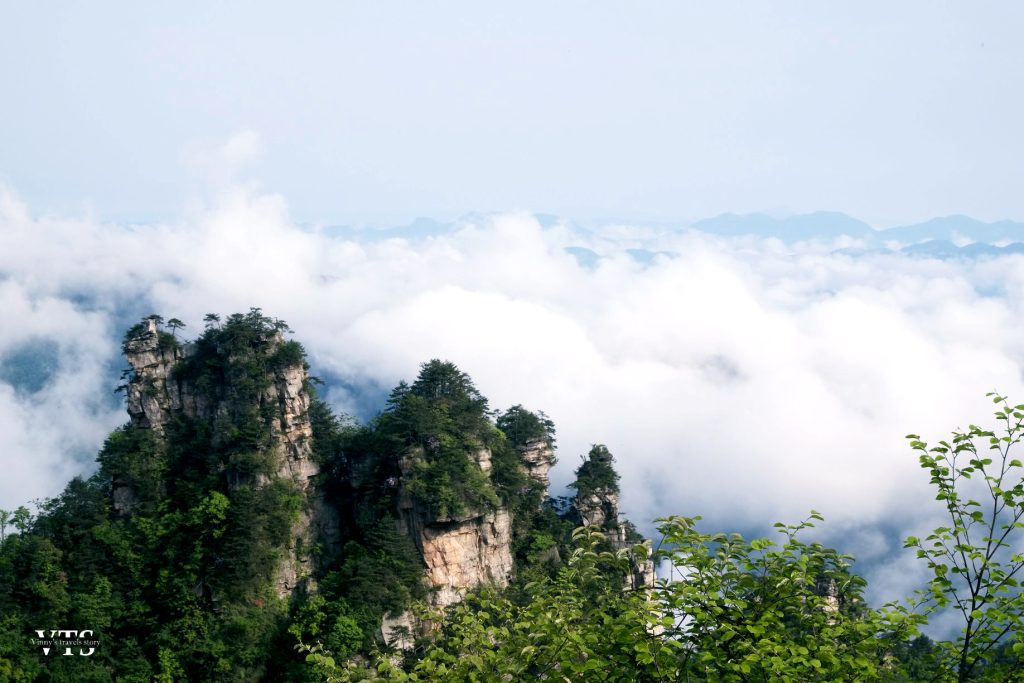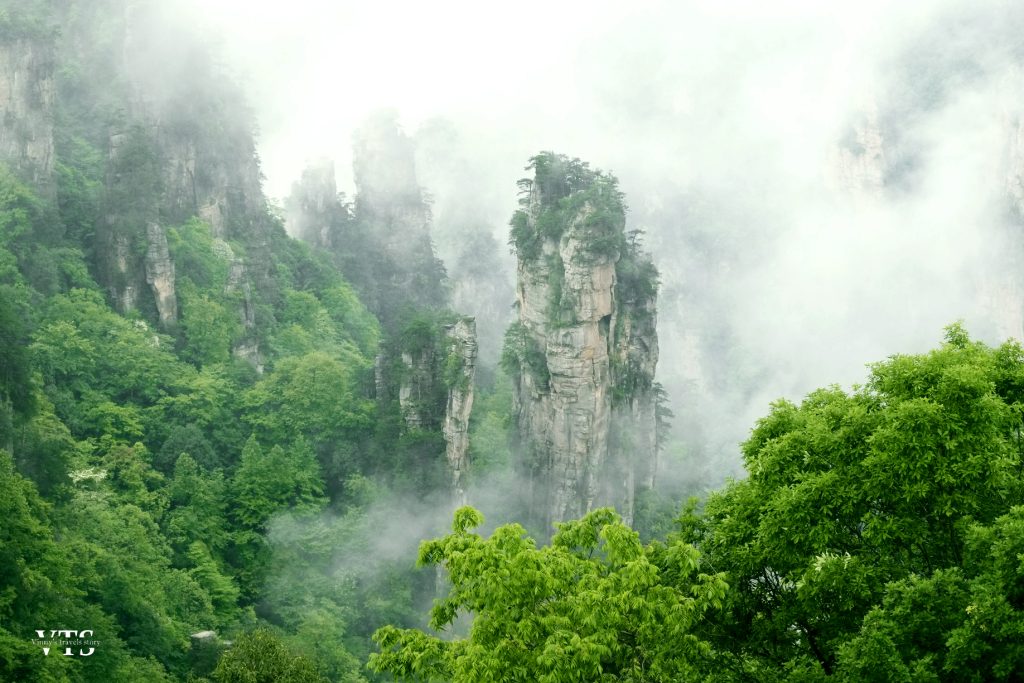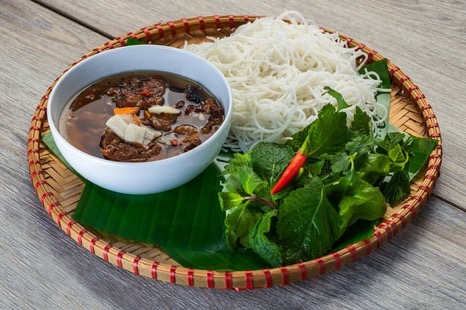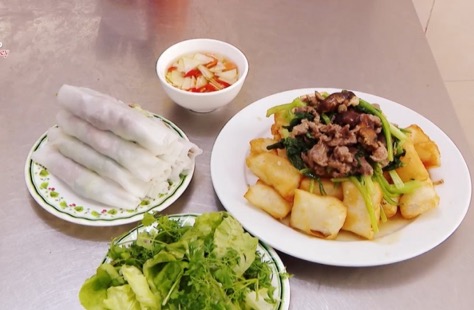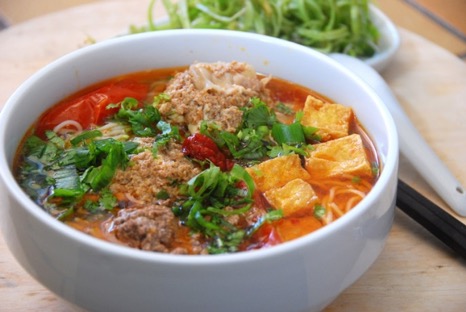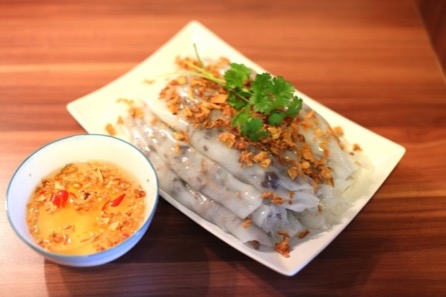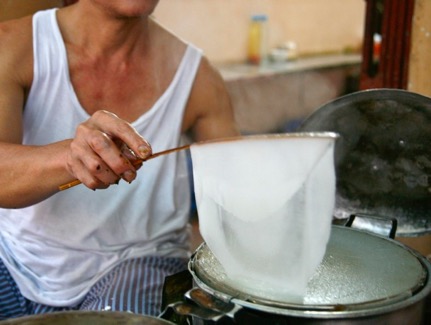For any well travelers, local culinary is one of the essentials for visitors. Vietnam is renowned and beloved for great local dishes. Let’s explore the top 10 popular Vietnamese dishes that must try when explore the country.
1. Pho/ Bun (Vietnamese noodles)
Thanks to the globalization, Vietnam food restaurants are opened in many countries in the words of which mainly selling Vietnam Noodles. Undoubtedly, this dish is the most popular one to the people over the world. However, a little known fact is that Vietnamese people cook and make the noodles in diverse styles as well as ingredient combinations that create dozens of dishes with totally different tastes and experiences.
Then, when travel to Vietnam, the visitors are recommended to taste different versions of noodle instead of the popular one widely known.
The rice noodle itself is also made with different shapes, mainly are Phở (flat noodle stripes) and Bún (the rounded noodle thread). Below are the most popular and favourable noodle dishes in Vietnam:
Phở (Noodle soup): The common and traditional one of rice noodle with toppings of fresh beef or chicken. The broth probably is the most important factor contributing how good the Pho is.
Phở Trộn (dried mixed noodle): The rice noodle is mixed with herbs, soya sauce, sweet taste, sour taste, slight spicy taste from fresh chillies, peanut, protein from beef or chicken.
Bún Bò Huế (Hue beef noodle soup): A representative noodle in Hue, the central region of Vietnam. Apart from beef, local people in Hue combine more ingredients with the Bun such as pig’s trotter, boiled pig’s blooded, lean pork paste, etc. Especially, this noodle type will be served with special regional chilly paste.
Phở Cuốn (Fresh rolled noodle): Stirred beef mixed been sprouts and fresh herbs are wrapped by a noodle sheet. Sound simple, but the perfect taste blending of this dish is favored by many Vietnamese.
Phở Chiên Phồng (Deep fried pillow rice noodle): The noodles turn crispy when being deep fried. The way of eating this pillow rice is fun and delicious, of course.
Bún Chả (Rice noodle with BBQ pork): One of the names shouted by tourists when traveling in Vietnam. When visiting Vietnam, Barack Obama President and talented chef Anthony Bourdain had Bun Chat together at a local restaurant. The photo of them dining together, along with Barack Obama Bun Cha combo get soon become viral.
Bún Riêu (Crab soup noodle): This dish is least known by the foreigners however its a type of nostalgic one when Vietnamese travel abroad. Bun Rieu is a traditional dish cooked in countryside style by using the ingredients of villages like field crabs, tofu, pork ribs, tomato, local herbs vegetables, banana flower fresh salad, etc.
2. Banh Cuon (Vietnamese steamed rice rolls)
One of popular dishes for Vietnamese cooked on a cloth covering steaming pot. A thin layer of rice liquid stuffed with minced pork and ear-mushroom. The last step is spreading homemade deep fried onion. It’s simply served with traditional fish sauce with addition of pepper, rice vinegar, and herbs. This could be a breakfast or midday/ midnight snack.
3. Cha Ca (Grilled fishes)
This is the specialty of Hanoi but loved by Vietnamese. A Street in Hanoi Old Quarter is named after this dish. When you step into the restaurant, they serve only one dish of traditional grilled fish of fish fillet (different type of river fishes are used depending on season like sturgeon,anchovy fish, etc.) soaked in fresh natural ingredients mainly including turmeric, galangal root, and lemongrass; then will be grilled on charcoal and ready to be eaten.
When serving to the restaurant guests, a small pan will be heated with light jelly fire to make the sizzling fish and then you will add more and more green onion and dill. You can mix the fish with rice noodle, fish sauce or stronger taste of shrimp paste, peanut, herb and enjoy.
4. Nem (Deep fried spring rolls and fresh spring rolls)
Deep fried spring roll is a traditional dish and very popular in Vietnam. It takes time prepare the ingredients, wrapping them in rice paper and patiently deep fry them. This dish is regularly prepared during family union events. Due to the ingredients of making this dish like minced pork, bean thread, green onion, carrot, ear-mushroom, shiitake mushroom, bean sprout, coriander, fresh egg and so on, it’s smell is attractive when being deep fried.
There are two types of Nem which are deep fried spring roll and summer rolls which are both wrapped with a rice paper. While the spring roll is crispy and should be eaten with sweet and sour fish sauce and some salad, the soft summer rolls is made with fresh and boiled ingredients like boiled pork or prawn, thin slices of carrot, cucumber, coriander, fried egg, etc. and also be eaten with fish sauce.
5. Banh Mi (Vietnamese baguette)
Among 2 dishes of Vietnam whose names are featured in Oxford Dictionary (Pho and Banh Mi), Vietnamese baguette is influenced by the colonial culture. As cheese, milk and fruit jam weren’t available over Vietnam at the time, the local people adjust the taste by adding the ones familiar to them like fried egg, pate, roasted pork, cucumber slices, herbs, etc. In modern time, people are more creative in creating more tasty tastes and sell delicious baguette with higher rates. The price to get a Vietnamese baguette then varies from around $0.5 to $2.
6. Banh Xeo (Vietnamese Crepe Wrap)
In Vietnamese, Banh Xeo means sizzling cake which is probably due to the sizzles when the cake is being made. It’s believed to come from the central region of Vietnam. However, these days there are variable versions of Banh Xeo all over Vietnam and in different sizes, regional vegetables.
One of the reasons that Vietnamese enjoy the crepe wrap is the crispy yellow crepe, wrapped in the rice paper with so many vegetables which taste delicious when being dipped with sweet, sour and slightly spicy source.
7. Xôi (Vietnamese Sticky Rice)
Sticky rice is one of the most popular breakfasts for Vietnamese because of its convenience. While the neighbor Laotian prepare plain white sticky rice and served separately with lap or other meat, Vietnamese input all in the combo for the convenience ready-to-eat.
The sellers only need a bamboo basket covered well by thick cloth to keep the heat as long as possible and some bottle to contain the toppings like minced peanut, green bean. In some special traditional occasions like wedding party, death anniversaries Vietnamese people also prepare the steamed sticky rice decorated nicely. There are so many toppings to combine with the plain sticky rice. Some popular ones to call out ground mung beans & fried onion, chicken stirred with mushroom, steam corn, peanut, black bean, coconut, etc.
8. Lau (Vietnamese steamboat)
The steamboat is a favourable choice for small group dining. Everyone gather around a hot pot to talk cosily and enjoy meal together by dipping fresh ingredients into the hot pot. This dish is available in many Asian countries but each other unique and different in the selections of ingredients, broth preparation and dipping sauce. There are options of beef, chicken, seafood or mixed steamboats.
9. Com Tam Suon (Broken steamed rice with bbq pork)
A Saigonese simple and convenient served with broken steamed rice and barbecued pork cutlet and some cucumber salad. Fish sauce and fresh chillies are free of charge and always available on the dining table.
10. Bun Dau Mam Tom (Rice noodle with fried tofu and shrimp paste)
The dish is with simple appearance but cause nostalgic feelings whenever Vietnamese are abroad. This dish is a combination of rice noodle, deep fried tofu, vegetable, sliced pork and especially the fermented shrimp paste. For those who can’t stand this sauce’s strong smell will be afraid of it can go with fish sauce, but who, major of Vietnamese, can enjoy the paste will find a unexplained joy with it. The shrimp paste could be less strong and become tastier when mixed with some sugar, chilly and kumquat juice.
If you have tried any dishes mentioned above, why not leaving a comment sharing with us the experiences of yours. 🙂
Highly recommended travel itinerary to visit Vietnam and taste the local cuisine: VIETNAMESE CUISINE 11 DAYS
